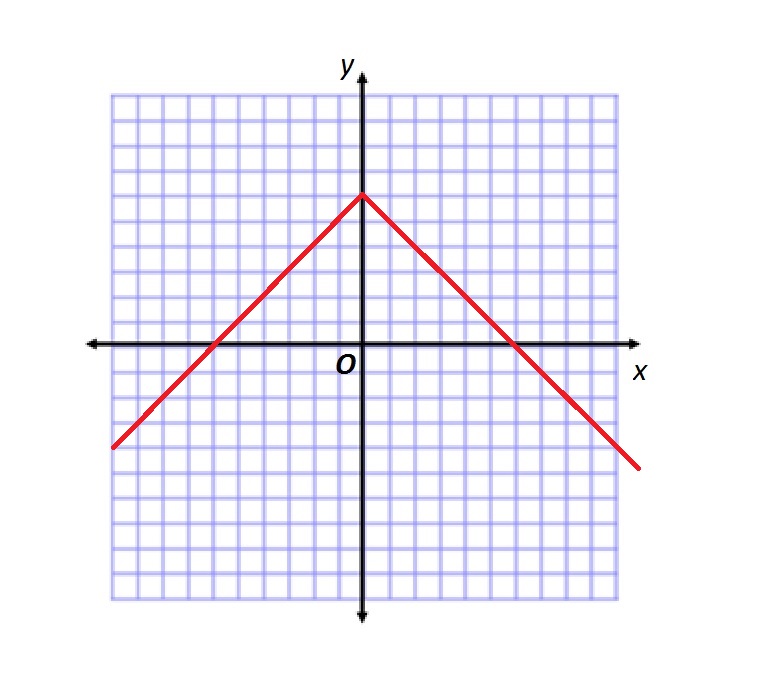All Algebra II Resources
Example Questions
Example Question #1 : Graphing Absolute Value Functions

Refer to the above figure.
Which of the following functions is graphed?
Below is the graph of 

The given graph is the graph of 



The function graphed is therefore
Example Question #71 : Absolute Value

Refer to the above figure.
Which of the following functions is graphed?
Below is the graph of 

The given graph is the graph of 




The function graphed is therefore
Example Question #3 : Graphing Absolute Value Functions

Refer to the above figure.
Which of the following functions is graphed?
The correct answer is not given among the other responses.
Below is the graph of 

The given graph is the graph of 


The function graphed is therefore


Example Question #1 : Graphing Absolute Value Functions

What is the equation of the above function?
The formula of an absolute value function is 





Example Question #5 : Graphing Absolute Value Functions
Give the vertex of the graph of the function 
None of the other choices gives the correct response.
Let
The graph of this basic absolute value function is a "V"-shaped graph with a vertex at the origin, or the point with coordinates 

The graph of this function can be formed by shifting the graph of 



Example Question #4862 : Algebra Ii
Give the vertex of the graph of the function 
None of the other choices gives the correct response.
Let
The graph of this basic absolute value function is a "V"-shaped graph with a vertex at the origin, or the point with coordinates 


or, alternatively written,
The graph of 





Example Question #82 : Absolute Value
Which of the following absolute value functions is represented by the following graph?
The equation cannot be determined from the graph.
The equation can be determined from the graph by following the rules of transformations; the base equation is:
The graph of this base equation is:
When we compare our graph to the base equation graph, we see that it has been shifted right 3 units, up 1 unit, and our graph has been stretched vertically by a factor of 2. Following the rules of transformations, the equation for our graph is written as:
Certified Tutor
Certified Tutor
All Algebra II Resources


















































